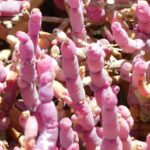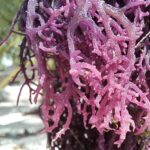Sea-Gypsies – Urak Lawoi, Moklen, and Moken – traditionally catch octopuses along the Andaman Sea’s rocky shores. Using a metal skewer and baited bamboo stick, they locate octopuses in holes with foam or clean pebbles. Patiently baiting them, they impale octopuses with the metal skewer, preventing contact to avoid their tentacles’ suction. This traditional method includes finding, baiting, and safely handling octopuses for sustenance.
General

Catching octopuses is a common pastime for Sea-Gypsies. These tribes migrated from the Myanmar archipelago on the Andaman Sea towards Thailand. The Thai government settled most of them into permanent villages, which they accepted and use now as a basis for their lifestyle.
A Thai friend of mine connected me to the Headman of the Sea-Gypsy community in Koh Lanta. This Headman organized selflessly beach combing and foraging outings with various Sea-Gypsy men, showing their specific skills and knowledge.
Octopus species caught by the described method

During one of our outings, we caught so-called Marbeled Octopuses (Amphioctopus aegina). This is a small octopus species with a maximum mantle length of 10 cm / 4 inches and a tentacle length of about 25 cm / 10 inches. A description of this species can be found here.

Equipment to catch octopuses
Two tools are necessary to catch these octopuses at low tide in rocky coastal areas along the Andaman Sea. One is a about 50 cm long double-pronged metal skewer, and the other is a 60 cm long, thin bamboo skewer.
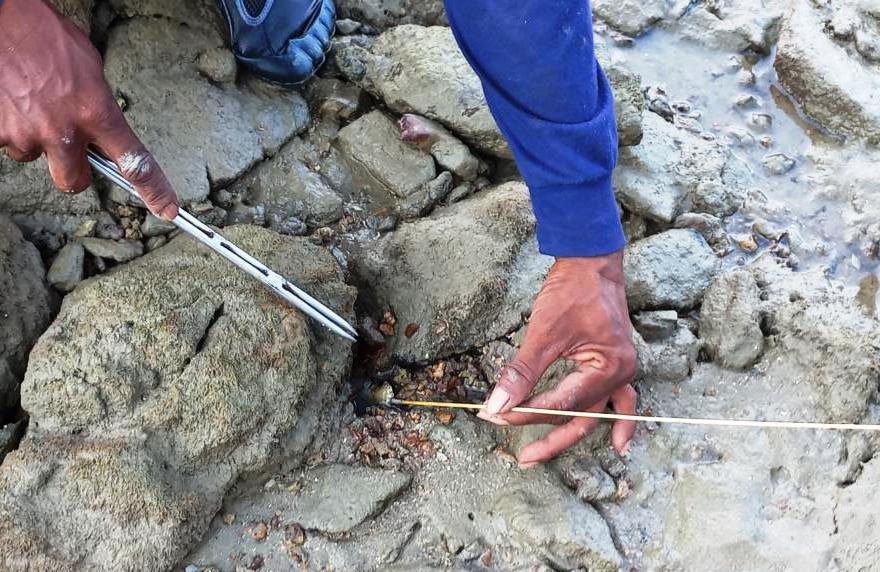
The metal skewer consists of two pointed stainless steel rods spot-welded with a 5 mm gap between them. See the picture above.
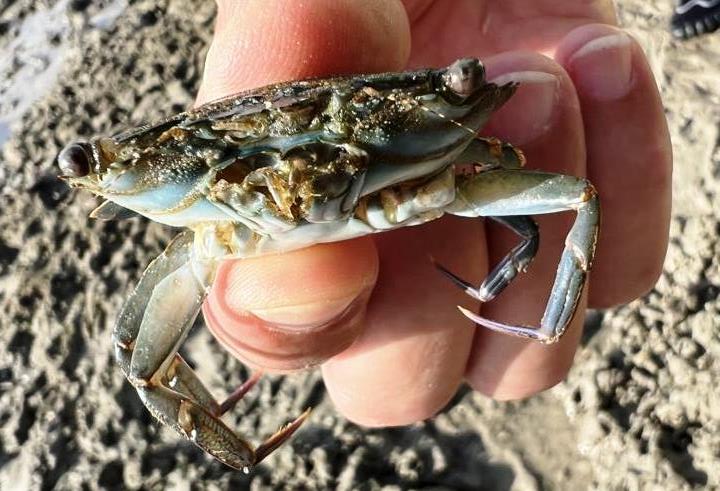
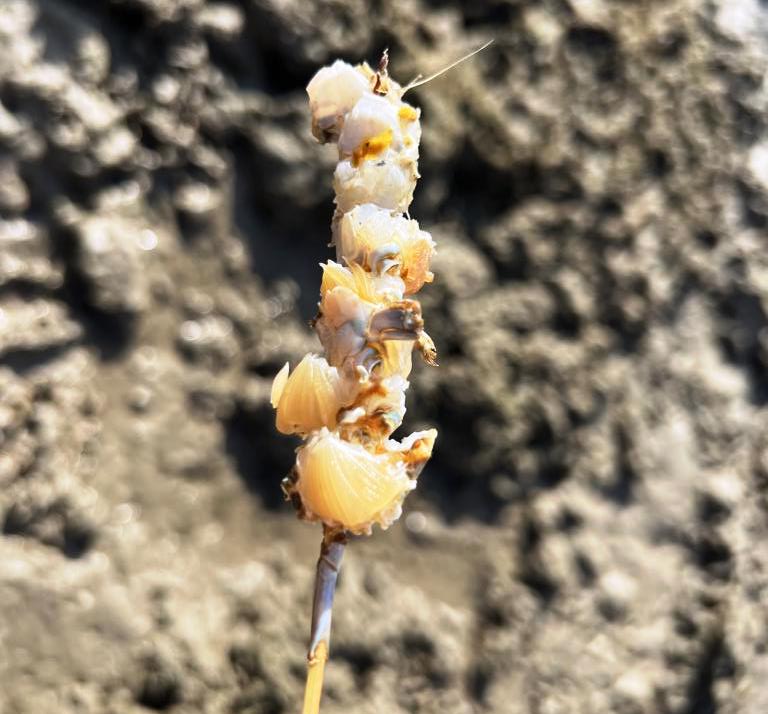
The bamboo skewer holds pieces of crab meat, connecting crab feet and the body. These pieces of crab meat are held securely on the bamboo skewer for the whole outing, giving off a long-lasting and luring smell for the octopuses.
Where to find octopuses?
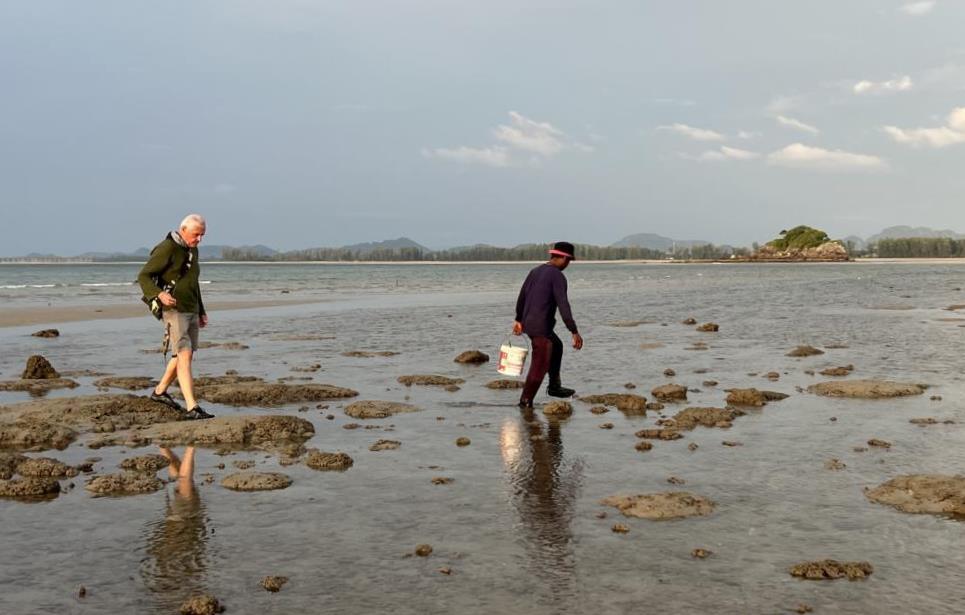
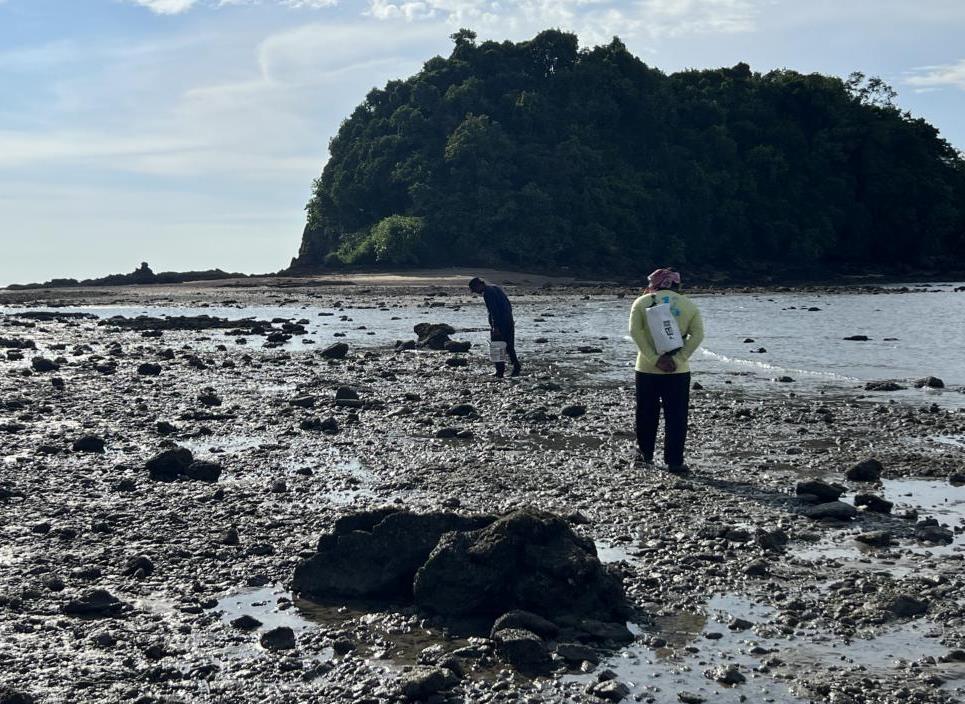
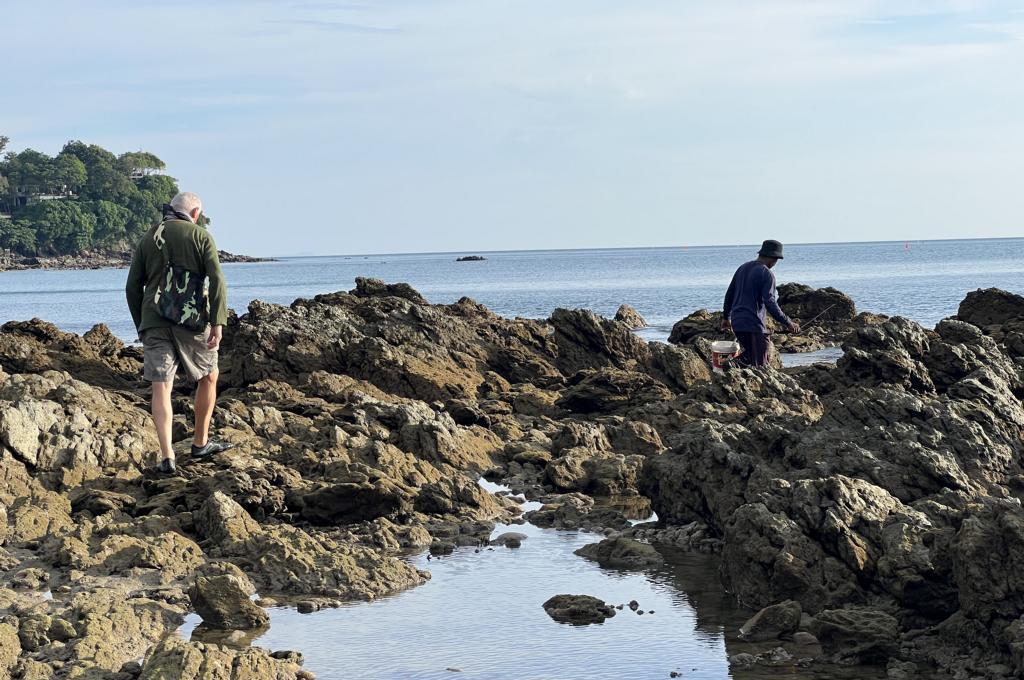
Marbled Octopuses can be found in rocky areas along the Andaman Sea coastline, freshly exposed to the tide. These areas range from flat, rocky plateaus to craggy rock formations. And the octopuses always hide deep in rock holes and cracks, still covered by seawater. There are two indications of an octopus hiding within a hole or crack.
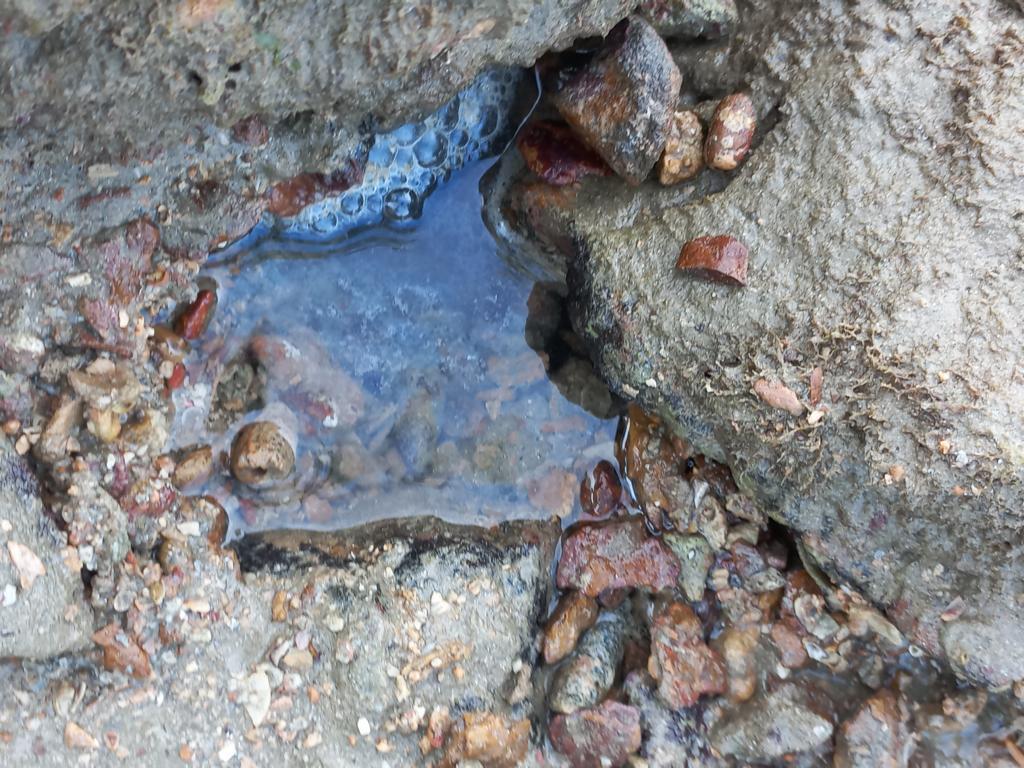
One is the presence of foam above the hiding hole.

Another indication is small stones or pebbles around the entrance of the hiding place. These pebbles appear clean and are not covered by grit, sand, or algae.
Catching method
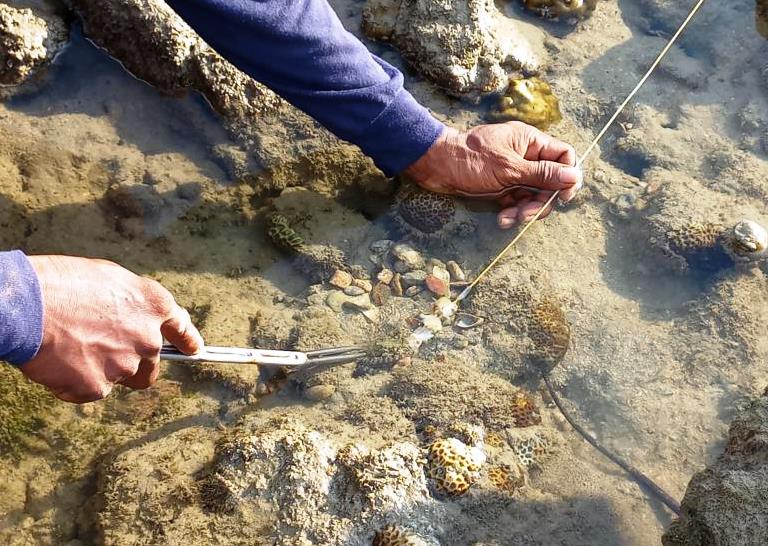
After a hole is found with clear indications of being populated, the person positions himself opposite to the angled direction of the entrance. He avoids disturbances like noise or vibrations. And he ensures that his shadow is not cast over the entrance of the populated hole. He takes the bamboo skewer with the bait in his left (respective: non-leading-) hand. With his other hand, he positions the two points of the metal prong right above the uppermost part of the hole entrance.
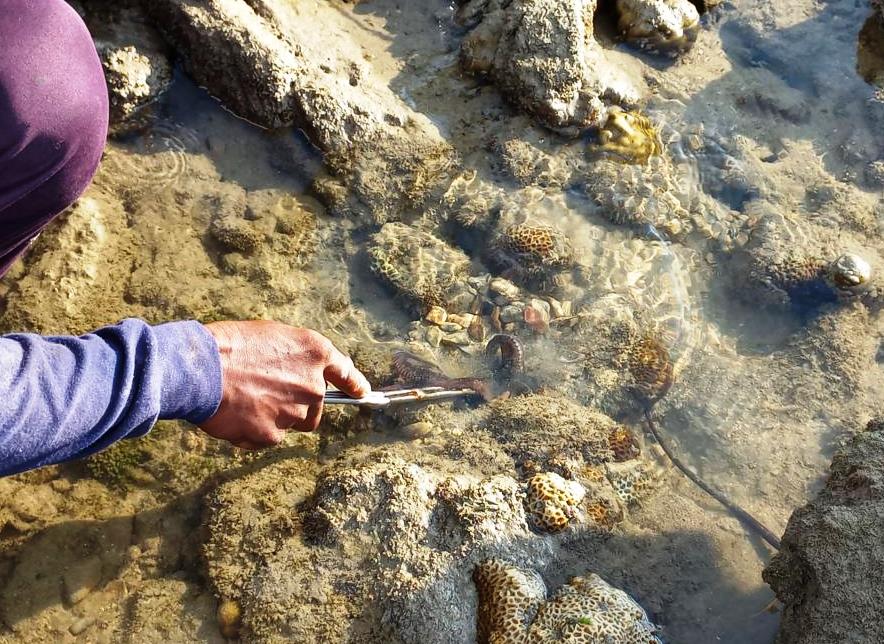
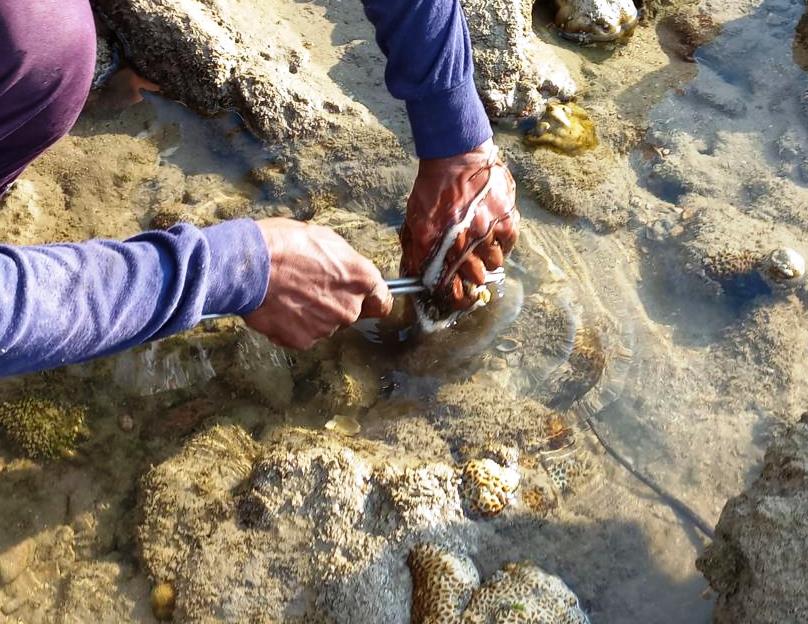
At the beginning, the skewer with the bait is positioned deeper in the hole and will be slowly retracted. The octopus will follow the bait towards the entrance. The person will slowly move the bait outside the hole and wait until the head portion of the octopus is visible. And will push the metal prong into this part of the body. He immediately releases the grip on the bait skewer and grabs the octopus’s head from above with his free hand. The octopus will often suck its tentacles onto the catcher’s hand. He even releases one or two tentacles to find a way of freeing himself.
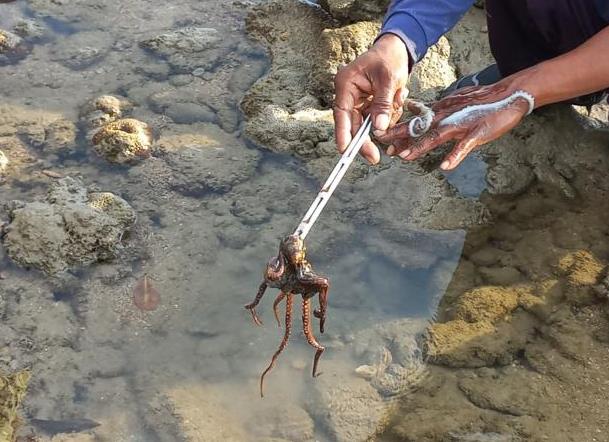
After being skewered by the metal prong, the octopus head will be turned inside out, and all content will be thrown away. During this operation, care has to be taken not to get bitten by the octopus’s beak. After that, the head portion and all single tentacles will be stuck onto a wire. This way, his suckers are out of reach of any items he would cling to. It was seen that the octopuses would succumb quickly.
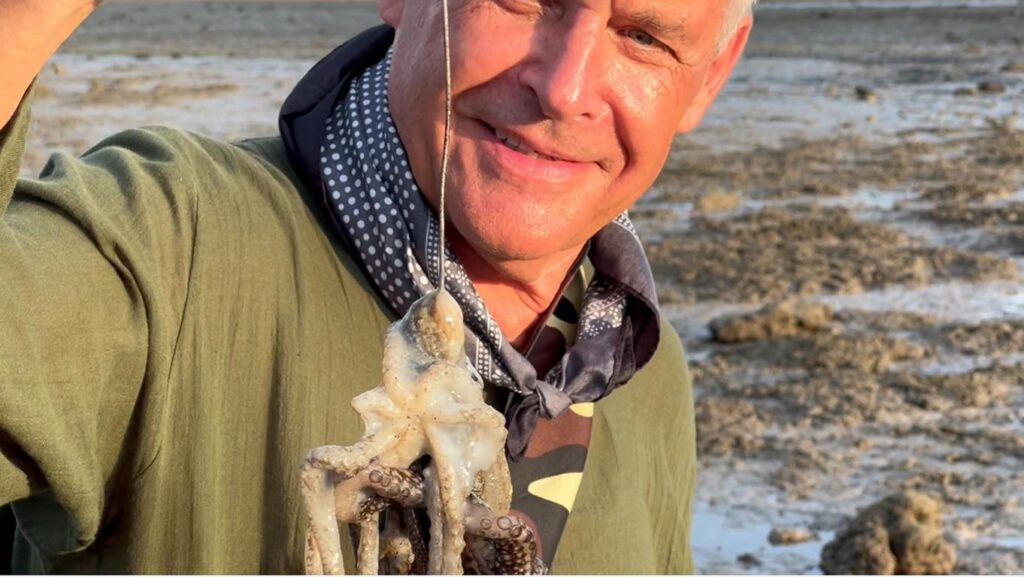
Lessons learned from Sea-Gypsies of how to catch octopuses:
- Marbled octopuses are found at low tide in holes on rocky shores of the Andaman Sea.
- Populated holes can be found by either foam on the water over the hole entrance or by clean pebbles around the hole entrance.
- Octopuses are baited with a skewer of crab meat.
- They are impaled by a pronged metal skewer when leaving the hole.
- Octopuses should not be handled but stuck on a heavy wire to avoid tentacles sucking on the person handling them.
Further readings about catching Cephalopods on this website:
Catching Octopuses in the lagoons
Rectangular squid traps in Thailand
Semi-circular squid traps in Thailand
.



